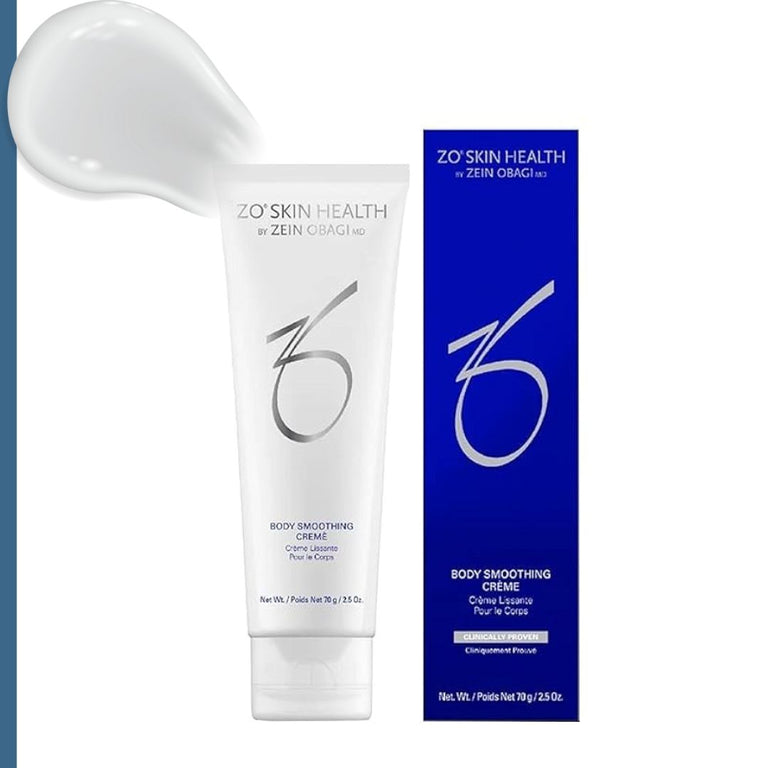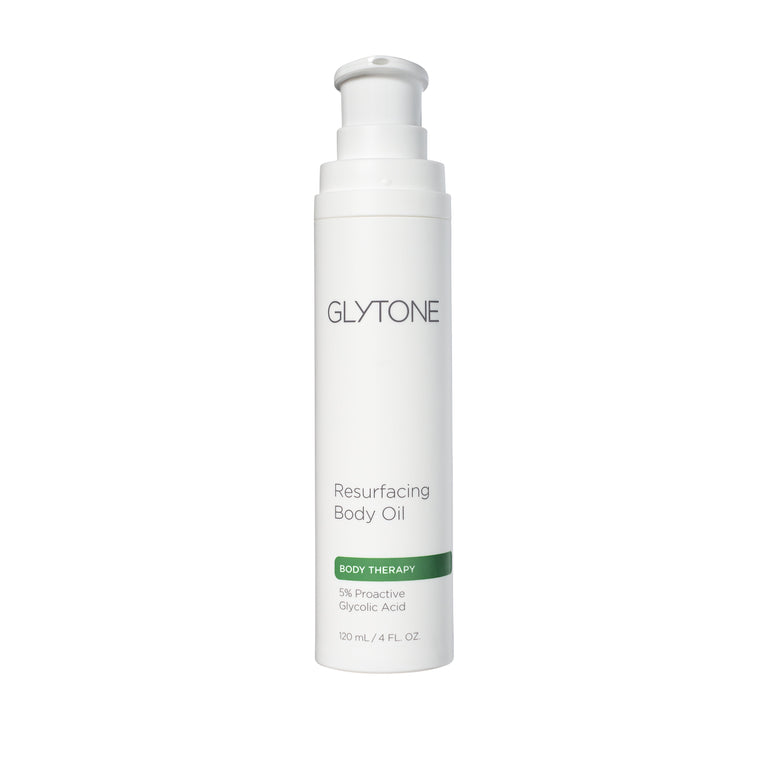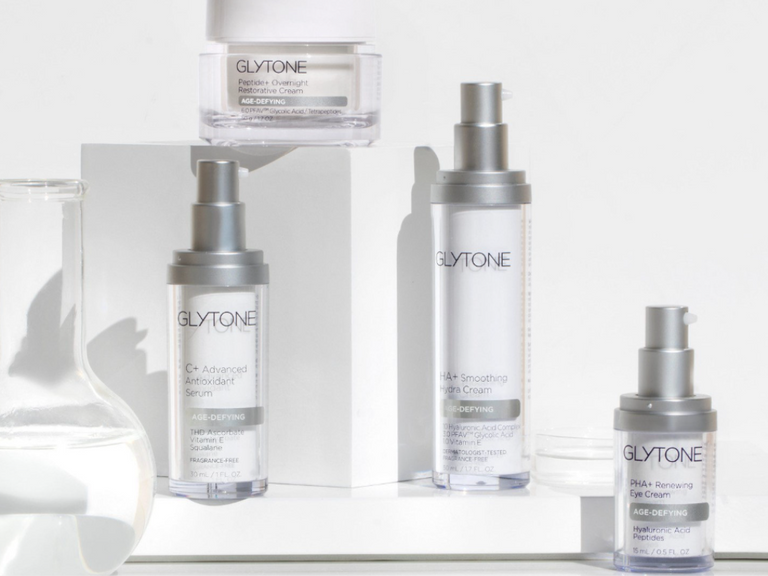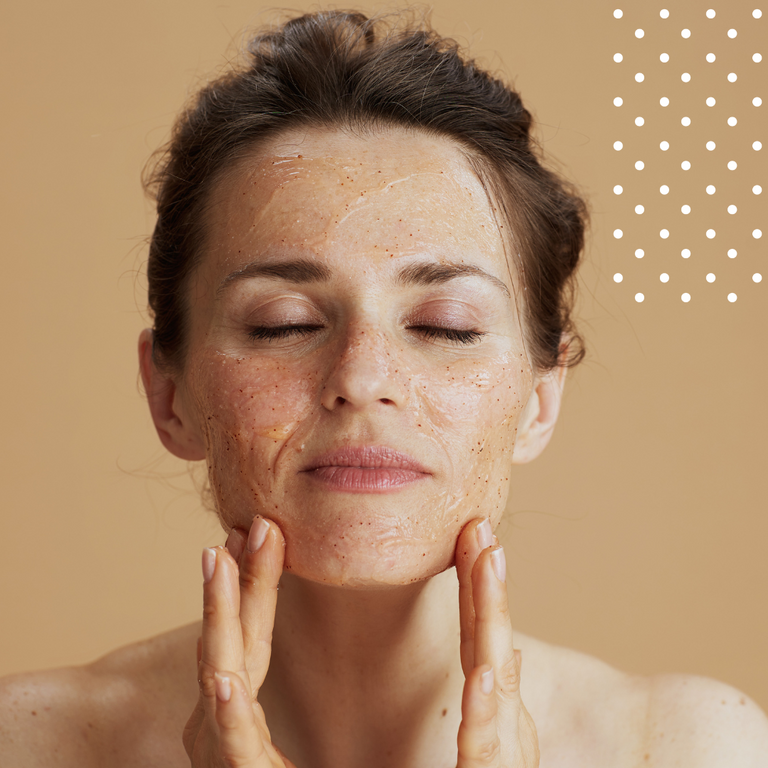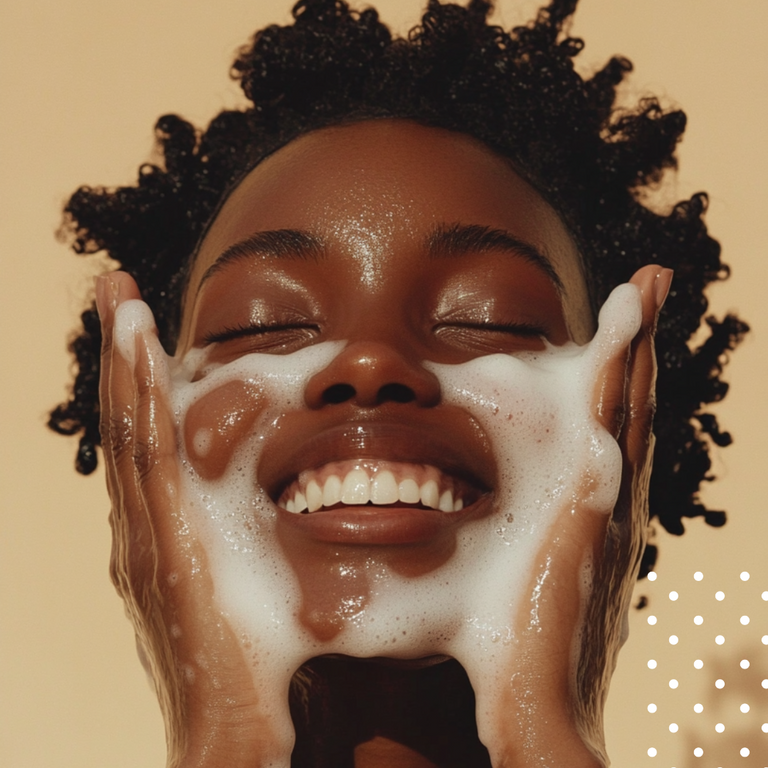If you’ve ever noticed rough, bumpy skin on your arms, thighs, or cheeks, you’re not alone. Known as Keratosis Pilaris (KP), or "chicken skin," it’s a common condition that can leave skin feeling uneven and looking flushed, especially as we head into the warmer months and start showing a little more skin.
At Face Dr, we’re here to help you manage Keratosis Pilaris, from understanding its causes to finding the right skincare for your body. We know KP can be frustrating, but the good news is that with the right care and products, it’s completely manageable.
In This Article:
- What is Keratosis Pilaris?
- What Causes Keratosis Pilaris?
- Recognising the Symptoms of Keratosis Pilaris
- What Can Worsen Keratosis Pilaris?
- How to Treat and Manage Keratosis Pilaris at Home
- Professional Treatments for Keratosis Pilaris
- Lifestyle Changes to Improve Keratosis Pilaris
- Tips to Prevent Flare-ups
- When to See a Dermatologist
Final Thoughts: Ready for Summer Skin Confidence?
What is Keratosis Pilaris?

Ever noticed tiny, rough bumps on your arms, thighs, or even your cheeks? You might be seeing Keratosis Pilaris in action. Often nicknamed chicken skin or strawberry skin, this harmless skin condition can make the skin feel uneven or textured.
Keratosis Pilaris is incredibly common, especially among teenagers, young adults, and people with dry or sensitive skin. While it doesn’t hurt or cause any medical problems, it can sometimes make you feel a little self-conscious about your skin’s appearance, especially when the weather warms up and you’re showing a bit more skin.
What Causes Keratosis Pilaris?
Wondering why you have KP? It's all about your skin’s natural process of building keratin to protect itself, but sometimes it builds up and gets stuck in hair follicles, creating those small, bumpy patches. It’s like your skin isn’t shedding properly, causing the keratin to get stuck and form those characteristic bumps.
But what causes all this to happen? Well, a few things:
- Genetics: If someone in your family has Keratosis Pilaris, you’re more likely to develop it too. In fact, about 30-50% of people with KP have family members who’ve had it.
- Dry skin: If you’ve got dry or sensitive skin, it can make the bumps more noticeable. Dry skin weakens the skin’s natural barrier, so the keratin build-up can become more of an issue.
- Environmental factors: Things like travelling to places with different climates or sudden weather changes can make KP flare up. Your skin might have a tough time adjusting to those shifts.
- Hormonal changes: Whether it's during puberty or pregnancy, those hormone fluctuations can also lead to keratin build-up, which is why KP is more common in teenagers and young adults.
While Keratosis Pilaris isn’t harmful or painful, it can make your skin feel rough or look uneven. And in the summer, when your skin’s more exposed, the bumps can be more noticeable. But don’t worry, it’s completely manageable!
Recognising the Symptoms of Keratosis Pilaris
Keratosis Pilaris often shows up before you even feel it — most people first notice the tiny, rough bumps and uneven texture. While it’s not painful or usually itchy, it can still be frustrating, especially if it appears on more visible areas like the arms or cheeks.
Here’s what to look out for:
- Small, painless bumps that feel like sandpaper or goosebumps
- Bumps that range in colour from flesh-toned to pink or red
- Rough, dry patches of skin where the bumps appear
- Redness or slight inflammation around the bumps
- Flare-ups occur during colder months when the air is drier
- Symmetrical appearance — it usually shows up evenly on both sides (e.g. both arms or both thighs)
These bumps most commonly affect the backs of the upper arms, thighs, buttocks, and sometimes the cheeks. In some people, they appear smooth and flesh-toned; in others, they might look more red and inflamed, especially when the skin is dry or irritated.
If you’re unsure whether you have Keratosis Pilaris, our team of Skin Experts at Face Dr is here to help — book a free online consultation for personalised advice.
Book your free video skincare consultation now
What Can Worsen Keratosis Pilaris?

Now that you know what to look out for, let’s explore some of the things that can make KP worse, so you can take steps to prevent flare-ups. Certain habits can make keratosis pilaris more noticeable. Here’s what to avoid:
- Perfumed soaps and harsh cleansers: These can strip your skin’s natural barrier, leading to dryness and worsening the bumps.
- Rough scrubs: Scrubbing can irritate your skin and make inflammation worse. Use a gentle cleansing mitt if you prefer physical exfoliation.
- Hot, long baths or showers: Hot water can dry out your skin. Keep showers short and lukewarm instead.
- Scratching, picking, shaving or waxing the area: These can irritate your skin, cause redness, and make Keratosis Pilaris more visible.
Taking gentle care and avoiding irritation are key to keeping your skin smoother and calmer.
How to Treat and Manage Keratosis Pilaris at Home
While there isn’t a quick-fix solution for Keratosis Pilaris, the good news is that it is completely manageable with the right care and products. By focusing on preventing clogged follicles, reducing inflammation, and keeping your skin nourished, you can smooth out the bumps and improve the overall texture of your skin.
Here’s how to manage KP effectively, with expert recommendations from our Face Dr team:
Gentle Exfoliation
Regular exfoliation is key to managing Keratosis Pilaris. Using chemical exfoliants like salicylic acid (BHA) and glycolic acid (AHA) helps smooth rough patches and promote clearer skin. These acids work by removing dead skin cells and unclogging follicles without the risk of irritation that physical scrubs can cause.
- Why exfoliate?
-
- Remove dead skin cells
- Unclog follicles
- Improve texture over time
Products We Trust for Effective Exfoliation
- Glytone Resurfacing Body Oil – Contains glycolic acid (AHA) and papain, a gentle enzyme that helps exfoliate the skin without irritation. Perfect for those with KP who need a smooth, non-abrasive exfoliation.

- ZO Skin Health Body Emulsion – This product combines papain, retinol, and encapsulated vitamins E, C, and A to gently exfoliate and improve skin texture, making it a great choice for sensitive skin.
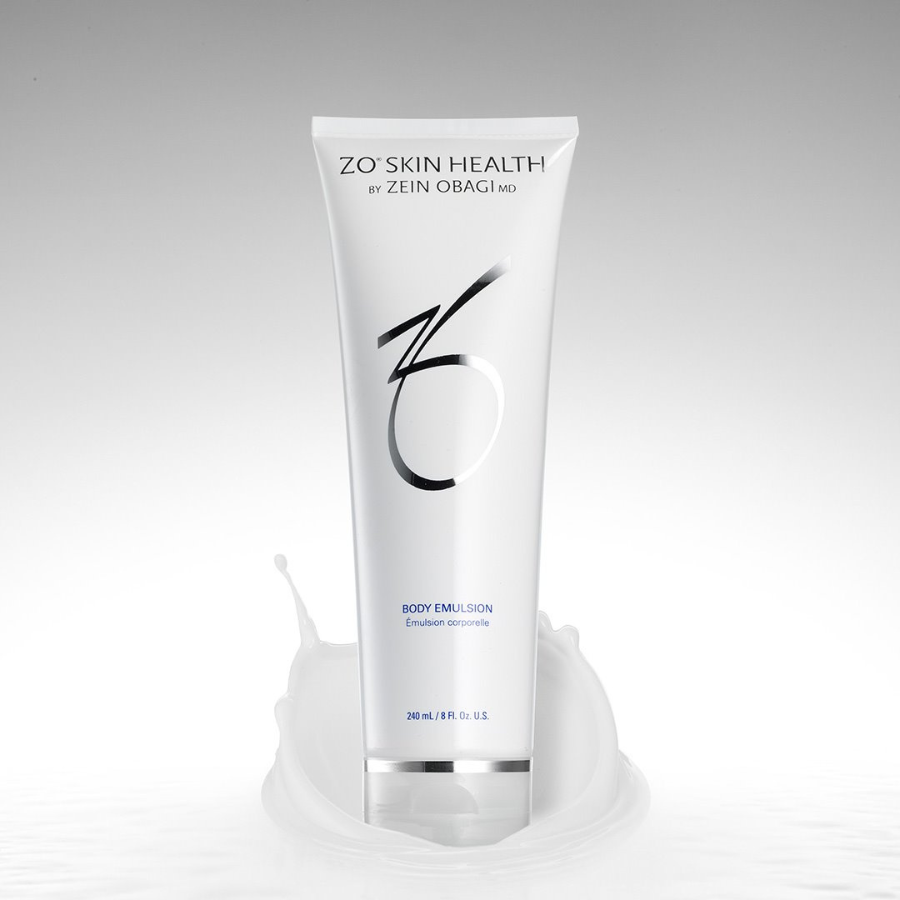
Pro Tip: Use exfoliants 2-3 times per week, alternating between products with AHA and BHA for a balanced routine. If you’re new to exfoliation, start slowly to avoid overdoing it.
Hydration is Key
Keeping your skin well-moisturised is essential for managing Keratosis Pilaris. Hydration helps soften the bumps, smooth out dry patches, and supports the skin’s natural barrier. We recommend lightweight, non-comedogenic moisturisers that won’t clog your pores.
Ingredients to look for:
- Urea – Helps break down keratin buildup while deeply hydrating
- Lactic acid – Exfoliates gently while adding moisture
- Ceramides – Strengthen the skin barrier and lock in hydration
- Shea butter or coconut oil – Nourish and smooth dry, flaky patches
Face Dr's Top Pick:
ZO Skin Health Body Smoothing Crème – This moisturiser is ideal for KP-prone skin, combining powerful hydration with gentle exfoliating ingredients to keep your skin smooth and balanced.
Expert tip: Apply moisturiser immediately after showering to lock in moisture and keep your skin from drying out, which can trigger flare-ups. Also, avoid harsh, drying body washes and opt for a fragrance-free, gentle formula instead.
If you're unsure how to incorporate these products or ingredients into your KP body care routine, our Face Dr team of Skin Experts is here to help. Reach out for a personalised consultation and guidance tailored to your needs!
Professional Treatments for Keratosis Pilaris
If at-home care isn’t enough, dermatologists can offer stronger, in-clinic treatments to manage Keratosis Pilaris.
- Chemical Exfoliation: Stronger peels with glycolic, salicylic, or lactic acid dissolve keratin buildup, improving skin texture and reducing bumps with minimal downtime.
- Laser Therapy: Lasers such as Pulsed Dye Laser (PDL), Fractional Lasers (FR), or Intense Pulsed Light (IPL) target redness, improve texture, and reduce discolouration, with multiple sessions typically required.
- Prescription Medications: Tretinoin, topical steroids, and urea-based treatments provide stronger solutions for persistent KP, improving skin cell turnover and reducing inflammation.
Lifestyle Changes to Improve Keratosis Pilaris

Small lifestyle adjustments can go a long way in managing Keratosis Pilaris and supporting overall skin health. With just a few simple changes, you can help reduce flare-ups and keep your skin feeling smoother and healthier.
- Diet and Nutrition: Incorporate omega-3s, vitamins A and E, and stay hydrated to reduce inflammation and support skin repair. Avoid excess sugar and processed foods.
- Clothing Choices: Wear loose, breathable fabrics to minimise friction and irritation. Opt for fragrance-free detergents and change out of sweaty clothes quickly.
- Managing Stress: Reduce stress with mindfulness, physical activity, and good sleep habits. Limit caffeine and alcohol during stressful times.
Making these simple changes can help keep KP under control while promoting healthier skin.
Tips to Prevent Flare-ups
Keratosis Pilaris can come and go, but with a few simple habits, you can reduce flare-ups and keep your skin looking and feeling smoother.
Prevention is all about small steps to maintain healthy skin and keep bumps at bay.
- Rethink hair removal: Shaving or waxing can irritate KP. Consider laser hair removal to remove hair without causing flare-ups.
- Take short showers and baths: Keep showers under 20 minutes with warm (not hot) water to prevent dryness. Limit bathing to once a day.
- Use a mild cleanser: Avoid bar soaps, which can dry out your skin.
- Skip the self-tanner: Self-tanners tend to make bumps more noticeable.
- Plug in a humidifier: Use one when the air is dry to prevent moisture loss from your skin.
- Protect your skin from the sun: Apply broad-spectrum sunscreen (SPF 30+) to exposed areas, even on cloudy days. Reapply every two hours if you’re outside, and wear protective clothing like long sleeves and hats to shield your skin from UV damage.
Taking care of your skin with these habits helps prevent flare-ups and supports overall skin health.
When to See a Dermatologist
Keratosis pilaris is usually harmless, but there are times when it’s a good idea to seek professional advice. If the bumps become painful, inflamed, or start affecting your confidence, a dermatologist can offer personalised solutions.
Consider booking a visit if:
- Your at-home treatments aren’t showing improvement
- The bumps are spreading, becoming itchy, or showing signs of infection
- You’re uncertain whether it’s KP or another skin condition
- You’re interested in prescription-strength treatments or laser therapy
- A quick consultation can provide clarity and help create a tailored care plan for your skin.
At Face Dr, we offer free online consultations to help guide you through personalised treatments and solutions. Ready to take the next step toward smoother skin? Book a consultation with us today!
Final Thoughts: Ready for Summer Skin Confidence?
Keratosis pilaris is harmless, but we know it can be frustrating. The good news is, with the right care, it’s entirely manageable. With a thoughtful skincare routine, simple lifestyle changes, and expert support, you can keep KP under control and feel confident in your skin.
As summer approaches, it's the perfect time to get ahead of those flare-ups. At Face Dr, our team of Skincare Specialists is here to offer personalised advice and treatments that are tailored to your unique needs. We’re committed to helping you achieve smooth, radiant skin so you can enjoy the sunny days ahead without any worries.
So, are you ready to take control of your KP and embrace smooth, summer-ready skin? Don’t wait—reach out to Face Dr today to book a personalised consultation. Let’s help you step into the sun with confidence!
Book your free video skincare consultation now
Articles we think you might like:

